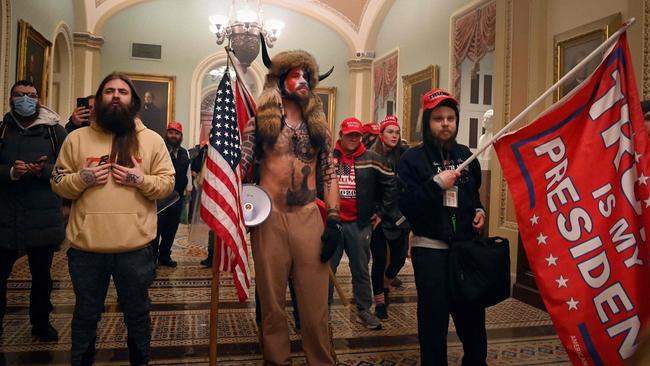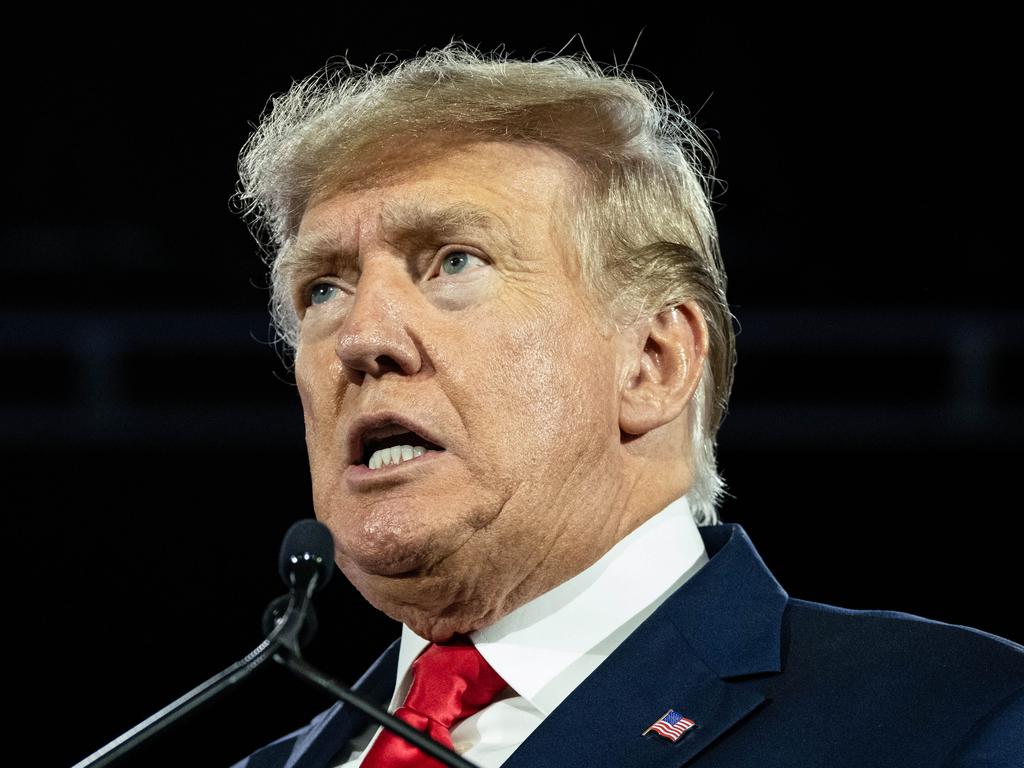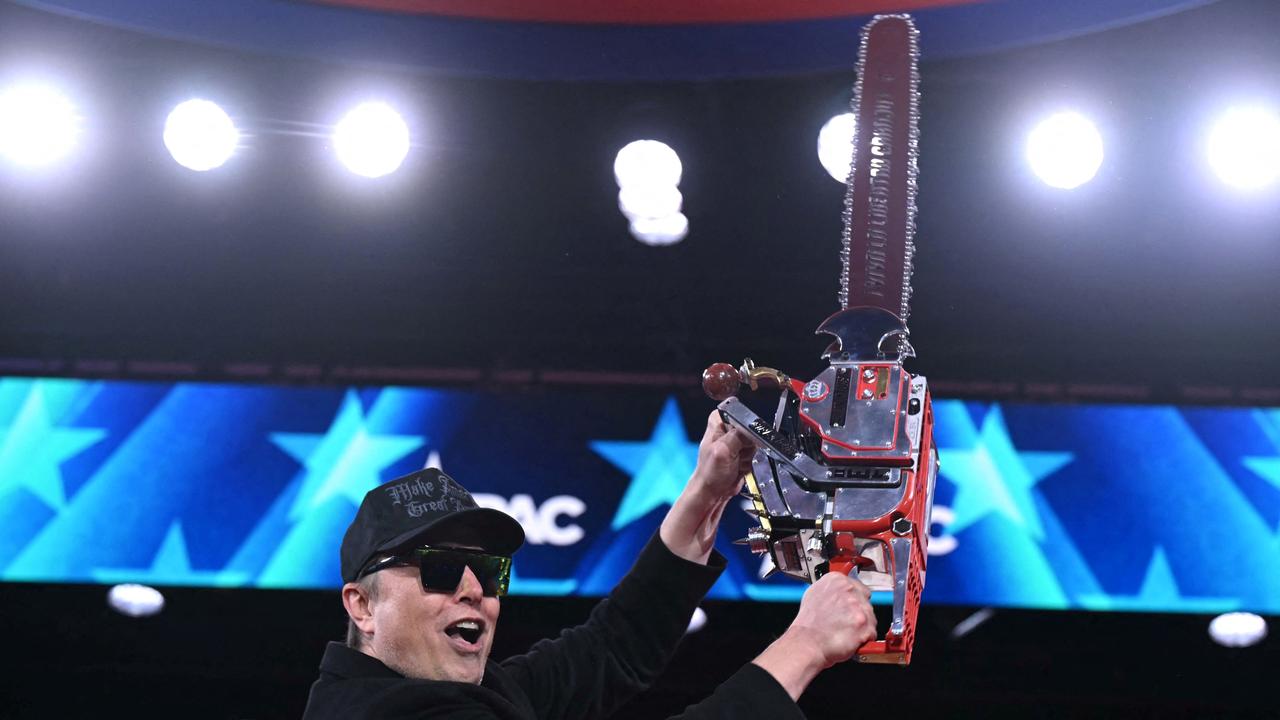Republican Speaker releases full set of January 6th surveillance tapes
The new Republican House Speaker Mike Johnson has started releasing up to 44,000 hours of footage that had been kept under wrap for almost three years.

Social media has exploded with video clips of January 6 protesters moving peacefully inside the US Capitol Building after the new Republican House Speaker Mike Johnson began to release up to 44,000 hours of footage that had been kept under wrap for almost three years.
In a series of social media posts on Friday (Saturday AEDT) Mr Johnson, who voted against certifying the 2020 presidential election, said he was fulfilling a promise he had made when running for Speaker, and one demanded by Republican supporters of Donald Trump who have argued Democrats exaggerated what they dubbed an ‘insurrection’ for political purposes.
“This decision will provide millions of Americans, criminal defendants, public interest organisations, and the media an ability to see for themselves what happened that day, rather than having to rely upon the interpretation of a small group of government officials,” Mr Johnson said.
“When bureaucrats and partisan activists withhold data to advance a narrative, it erodes trust in our institutions”.
Starting Friday (Saturday AEDT) about 90 hours of previously restricted footage was placed on the House of Representatives Administration Committee website, prompting Republicans and critics of the official narrative to post videos that showed protesters calmly interacting with police and security staff.
In one video a protester has his handcuffs removed by a police office who then ‘fist pumps’ the supposed insurrectionist.
Here's a January 6 video they've never shown the public.
— Citizen Free Press (@CitizenFreePres) November 17, 2023
A protester is uncuffed by Capitol police and then fist bumps another officer down a hallway away from everyone. pic.twitter.com/ft1yTOITLr
In another protesters walk casually down a hallway as police look on.
Jan 6 defendants have long argued that the initial entrants were peaceably escorted into the building by Capitol Police, and therefore had no reasonable expectation that their conduct was unlawful
— Michael Tracey (@mtracey) November 18, 2023
This video, suppressed for almost 3 years, confirms itpic.twitter.com/F24MAf0mXS
Mr Johnson said the entirety of the footage, except for around 5 per cent that “may involve sensitive security information related to the building architecture”, would be uploaded in coming days, ensuring a fresh round of debate over a day that would come to define the Trump presidency.
The January 6th protests saw around 2,000 supporters of the former president, many of whom were chanting ‘death to [then Vice president] Mike Pence, entered the Capitol building as members were seeking to certify the 2020 election results; one protester was shot and small number of police, who were overwhelmed outside the building, and protesters died subsequently from injuries and unrelated conditions.
Around 1,100 protesters have been federally charged over their behaviour, including 335 who have been convicted and sentenced to periods of incarceration, including a handful for up to 22 years.
Donald Trump, who is facing four federal criminal charges related to his behaviour around January 6th, congratulated the speaker “for having the courage and fortitude” to release the footage. Mr Trump has promised if re-elected to review the convictions of January 6th protesters with a view to pardoning most of them.
In the wake of the riot, which occurred two weeks before Joe Biden was sworn in as president, then Speaker Nancy Pelosi established a special investigatory committee, which ultimately recommended Donald Trump and others be criminally charged with seeking to overturn the results of the 2020 election.
The committee released its final report in December last year, including select footage that showed violent clashes with police outside the Capitol, which caused around US$3 million in damage to the building and surrounds, according to reports.
Vice President Kamala Harris later compared the riots to Japan’s attack on Pearl Harbour in 1941 and the terrorist attacks on the World Trade Centre in 2001, reflecting Democrats’ characterisation of the riots as an insurrection that sought to end US democracy.
Kamala Harris compares Jan. 6 to Pearl Harbor and 9/11. pic.twitter.com/CjEKU9u9DI
— The Post Millennial (@TPostMillennial) January 6, 2022
Others have argued it was a riot of disgruntled Trump supporters that spiralled out of control in the face of lax policing.
“Do you need any more proof that January 6 was NOT an insurrection?” asked Republican congressman Troy Nehls on social media following release of the first batch of video.
Debate over the severity, genesis and politicisation of the riots, including the extent to which law enforcement agencies adequately prepared for the event, have sharply divided US politics for almost three years.
Former Republican congresswoman Liz Cheney, one of two Republicans on the committee that investigated the riots, condemned the release, posting images of chaotic scenes outside the capitol building.
Here’s some January 6th video for you.
— Liz Cheney (@Liz_Cheney) November 17, 2023
pic.twitter.com/MReMysC534
Republican senator Mike Lee shot back: “Liz, we’ve seen footage like that a million times. You made sure we saw that – and nothing else. It’s the other stuff – what you deliberately hid from us – that we find so upsetting”.
Hannah Muldavin, a former staffer on the select committee, said release of the video was a “danger to our democracy” and a “serious security concern” in a statement to online news outlet RollCall on Friday.
New York Democratic congressman Joseph Morelle said it was “unconscionable that one of Speaker Johnson’s first official acts as steward of the institution is to endanger his colleagues, staff, visitors, and our country by allowing virtually unfettered access to sensitive Capitol security footage”.
Speaker Johnson released the video amid Republican criticism of his deal with Democrats to pass bills that would fund the US government until January, averting a shutdown that was otherwise due to start on 17th November.






To join the conversation, please log in. Don't have an account? Register
Join the conversation, you are commenting as Logout